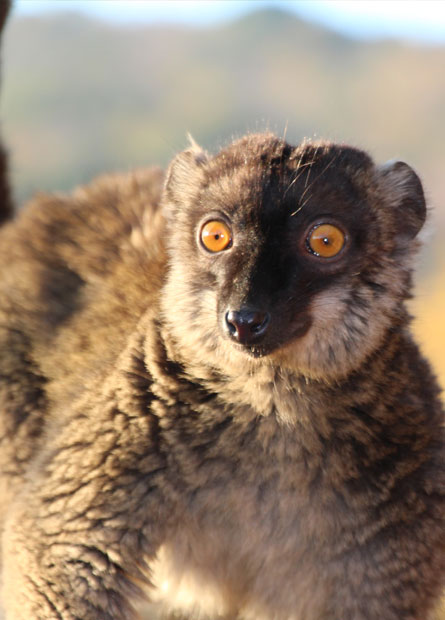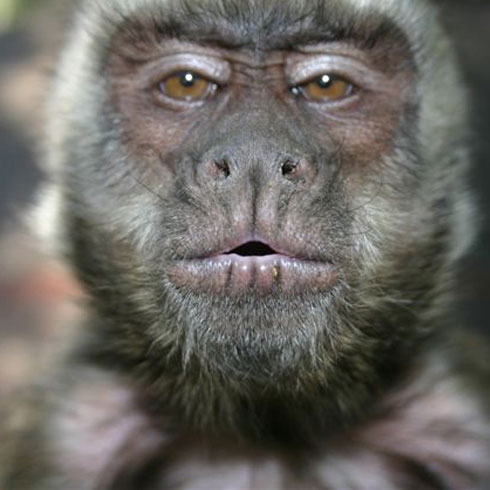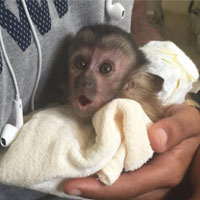Conservation status
Near threatened (IUCN Red List, 2016) What they look like
Unique among Eulemurs, common brown males and females share the same coloring—grayish brown with a blackish face and orange-red eyes. The more northern population has large, noticeable light patches above the eyes. Weighing 2-3 kilograms (about 4-6 pounds), they are sometimes confused with mongoose lemurs, which are grayer and sexually dichromatic.
Where they live
In Madagascar, common brown lemurs congregate in a variety of fragmented forests, mostly dry deciduous and moist montane forests in the northwest and rainforests in the central east. They are found in four protected areas including Andasibe-Mantadia National Park, Ankarafantsika National Park and Zahamena National Park. One of only two species found in the wild outside Madagascar, common brown lemurs also live on the island of Mayotte in the Comoros—likely introduced there by humans.
What they eat
Common brown lemurs browse on a wide variety of fruit, leaves, buds, and flowers, depending on the season. In the northwest, they eat cicadas and perhaps the occasional bird and eggs.
How they behave
Active during the day (diurnal), common brown lemurs also move and feed at night during the dry season. Sociable animals, they live in groups averaging 3-12 individuals, with none of the female dominance seen in other lemur species.
How they reproduce
In Madagascar, common brown lemurs reach sexual maturity at around 18 months and breed in May and June. Females give birth, usually to a single infant, about 125 days later(September/November)
What threats they face
Natural predators include hawks, boa constrictors, and fossae (the plural for fossa—a large, carnivorous mammal, related to the mongoose), Slash-and-burn agriculture and hunting are destroying their habitat.




 Conservation in Southern Africa is rapidly becoming unsustainable without the active involvement of the community, especially the younger, more active generation. The Bushbabies Monkey Sanctuary and The Elephant Sanctuary group strongly believe that we have to get the younger members of communities involved to instill a passion for the environment and wildlife in them through education.
Conservation in Southern Africa is rapidly becoming unsustainable without the active involvement of the community, especially the younger, more active generation. The Bushbabies Monkey Sanctuary and The Elephant Sanctuary group strongly believe that we have to get the younger members of communities involved to instill a passion for the environment and wildlife in them through education. I'll introduce you to Joyce, for example. A young female capuchin, she was rather pampered with child-like paraphernalia; a dress and a small hat around her head. Cute, indeed. She had been with her "foster" family since only two months old, bought straight from a breeder. The couple who owned her did not have children, and so decided to substitute the missing link with a primate, albeit a bit smaller...and with sharper teeth.
I'll introduce you to Joyce, for example. A young female capuchin, she was rather pampered with child-like paraphernalia; a dress and a small hat around her head. Cute, indeed. She had been with her "foster" family since only two months old, bought straight from a breeder. The couple who owned her did not have children, and so decided to substitute the missing link with a primate, albeit a bit smaller...and with sharper teeth.



